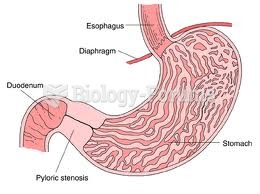Answer to Question 1
Thiamin is the vitamin part of the coenzyme TPP (thiamin pyrophosphate) that assists in energy metabolism. The TPP coenzyme participates in the conversion of pyruvate to acetyl CoA. Besides playing these pivotal roles in energy metabolism, thiamin occupies a special site on the membranes of nerve cells. Consequently, nerve activity and muscle activity in response to nerves depend heavily on thiamin.
People who fail to eat enough food to meet energy needs risk nutrient deficiencies, including thiamin deficiency. Inadequate thiamin intakes have been reported among the nation's malnourished and homeless people. Similarly, people who derive most of their energy from empty-kcalorie foods and beverages risk thiamin deficiency. Alcohol provides a good example of how empty kcalories can lead to thiamin deficiency. Alcohol contributes energy but provides few, if any, nutrients and often displaces food. In addition, alcohol impairs thiamin absorption and enhances thiamin excretion in the urine, doubling the risk of deficiency. An estimated four out of five alcoholics are thiamin deficient, which damages the brain's structure and impairs its function.
Prolonged thiamin deficiency can result in the disease beriberi, which was first observed in Indonesia when the custom of polishing rice became widespread. Rice provided 80 percent of the energy intake of the people of that area, and the germ and bran of the rice grain was their principal source of thiamin. When the germ and bran were removed in the preparation of white rice, beriberi became rampant.
Meats in the pork family are exceptionally rich in thiamin. Grains whole grains or enrichedare a reliable source of thiamin.
Prolonged cooking can destroy thiamin. Also, like other water-soluble vitamins, thiamin leaches into water when foods are boiled or blanched. Cooking methods that require little or no water such as steaming and microwave heating conserve thiamin and other water-soluble vitamins.
Answer to Question 2
Some water-soluble vitamins are synthesized by GI tract bacteria and absorbed by the large intestine, but not in quantities great enough to meet the body's needs; foods must supply these essential nutrients. The amount of vitamins available from foods depends not only on the quantity provided by a food but also on the amount absorbed and used by the bodyreferred to as the vitamins' bioavailability. The quantity of vitamins in a food can be determined relatively easily. Researchers analyze foods to determine the vitamin contents and publish the results in tables of food composition. Determining the bioavailability of a vitamin is a more complex task because it depends on many factors, including:
Efficiency of digestion and time of transit through the GI tract
Previous nutrient intake and nutrition status
Method of food preparation (raw, cooked, or processed)
Source of the nutrient (synthetic, fortified, or naturally occurring)
Other foods consumed at the same time






